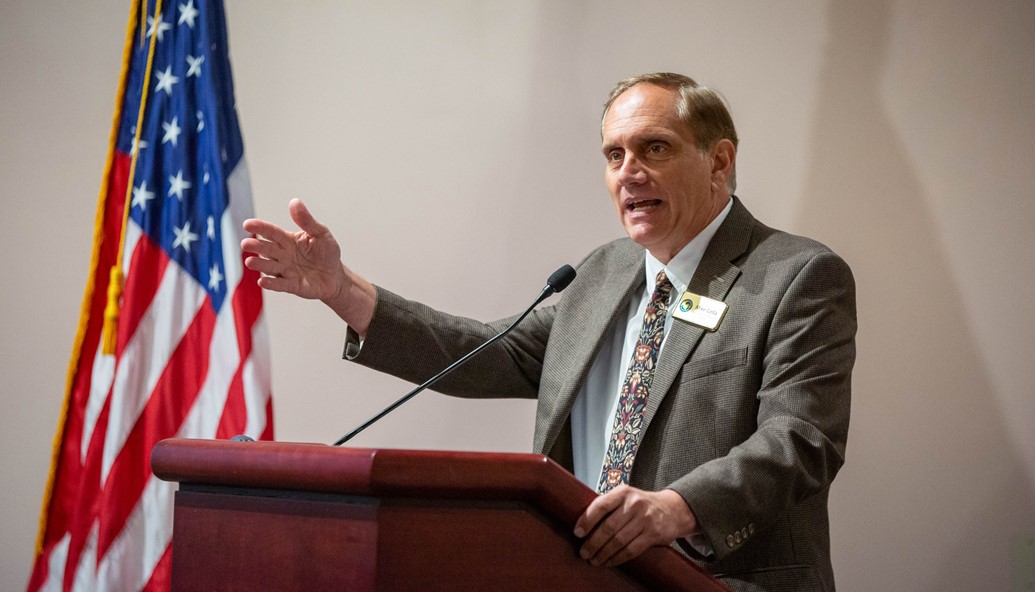July 19, 2019 First Coast Expressway will forever change Clay's future

Full article here
With the First Coast Expressway's ongoing construction, government officials, business stakeholders and residents took a long look Thursday at the county decision-makers’ to-do lists related to the roadway.
The 46-mile expressway with cashless toll gantries will change the face of Clay County, an audience at the Thrasher-Horne Center were told last week.
RS&H Senior Transportation Engineer C.J. Youmans said the expressway’s Phase 2, spanning from Blanding Boulevard to State Road 16 in Green Cove Springs, had an expected completion date in the fall of 2024. About 8% is done. Youmans estimated the Clay County tolls could cost $7.60 to pass with transponders, and $11.75 without one. The figures have not been finalized.
“If anyone knows of a bigger project [in Clay County’s history], let me know. I’d love to hear about it,” Youmans said.
Phase 1 from I-10 to Blanding Boulevard, was completed last year. Tolls are expected to go into effect in July. Funding was secured for Phase 3, which includes a rebuild of the Shands Bridge in Green Cove Springs.
“Right now, the current bridge is a constraint on a lot of communities and businesses down south. By doing this, we’re opening up the river corridor,” Youmans said. “It's going to have wide shoulders and safe LED lighting, so no more white-knuckling it over the bridge at night. You’re going to feel safe and drive fast.”
County Director of Economic and Development Services Chereese Stewart relayed the expressway’s fiscal impacts and the county’s initiatives.
At each of the expressway’s interchanges within the county, there would be opportunities for intense mixed-use development and employment centers. The interchanges are at Oakleaf Parkway, Blanding Boulevard, Henley Road, County Road 218, State Road 16, Governor’s Park and U.S. 17.
The county recently raised impact fees by about 65% and removed fair share fees. With fair share fees, the numbers would fluctuate, she added.
“Now it’s not a moving target, [developers] can budget the cost,” Stewart said.
Click here to watch video of the presentations.
With all the new building, utilities must keep pace. The Clay County Utility Authority has millions set for infrastructure improvements over the next decade. There is $3.5 million for FDOT’s utilities on the expressway, $10 million for Governor’s Park and $22 million of improvements to CCUA’s Peter’s Creek facility. CCUA Chief Operation Officer Jeremy Johnston said the agency expected to add 1,400 customers a month, about 400 more than CCUA adds per month now.
“These are all significant investments in the future because of the expressway,” Johnston said. “Accommodating growth and demand can be a tricky business. Your crystal ball is just as good as my crystal ball.”
New residents bring, or have, children. Clay County School District Superintendent Addison Davis’ lengthy presentation addressed the school district’s needs amid the growth. It’s a tall order: $300 million for deferred school maintenance costs to bolster ailing infrastructure and five new schools to handle an estimated 6,000 new students.
Board members are mulling adding a half-cent sales tax to the 2019 ballot for infrastructure. Davis said new elementary schools have a price tag of $30 million and high schools run about $80-90 million. The target areas for new schools are Oakleaf, Lake Asbury and Governor’s Park in the next six-to-10 years to ease area schools’ capacity.
After Davis joked about passing a hat around the room for funding, he said potential funding sources included impact fees, bonds and the district’s general fund.
“The biggest things you see [on the presentation] is ‘To Be Determined,’” he said.
County Commissioner Mike Cella described hypothetical scenarios in closing. He told the audience of a family from Georgia discovering Clay County while on vacation, attending events and spending money at local businesses. Another was a commuter whose life changed because of the expressway, and who encouraged friends to live in Clay.
The scenarios were not only possible, but probable, Cella said, and Clay must maintain its agricultural roots and small-town feel, while preparing for change.
“Though there may be budget constraints or construction delays, we cannot let the First Coast Expressway disappear in the rearview mirror with any business owners or residents who want to come to Clay County,” Cella said. “We’ve got to be open for business.”
